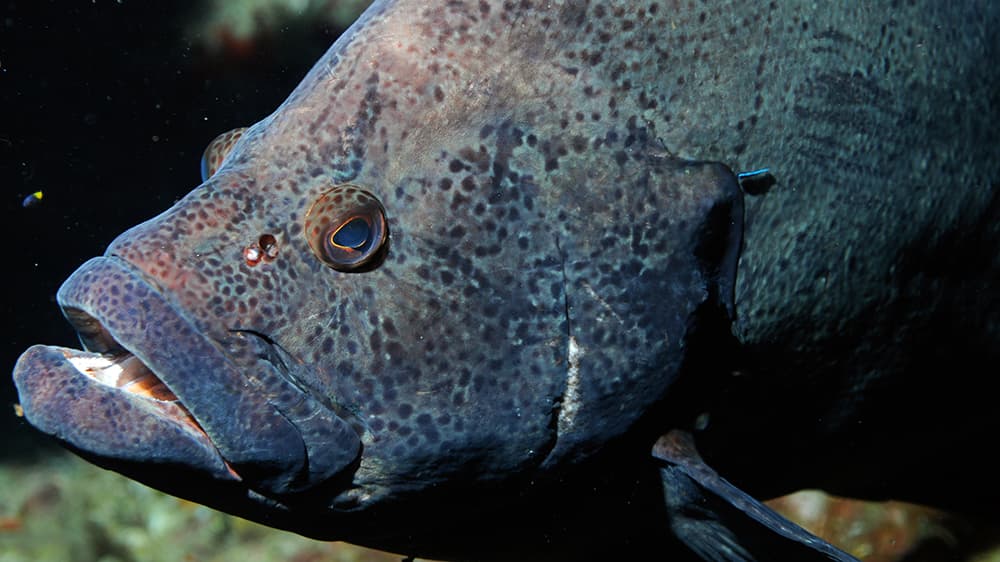
So, you're not a diver but you'd like to feel like one? This is the dive trip for you! If you are a diver, this is also a great way to preview the reefs at East and West Flower Garden Banks.
A typical dive begins with a leap into crystal blue waters. Upon submerging, you are immediately greeted by several barracuda keeping a watchful eye.
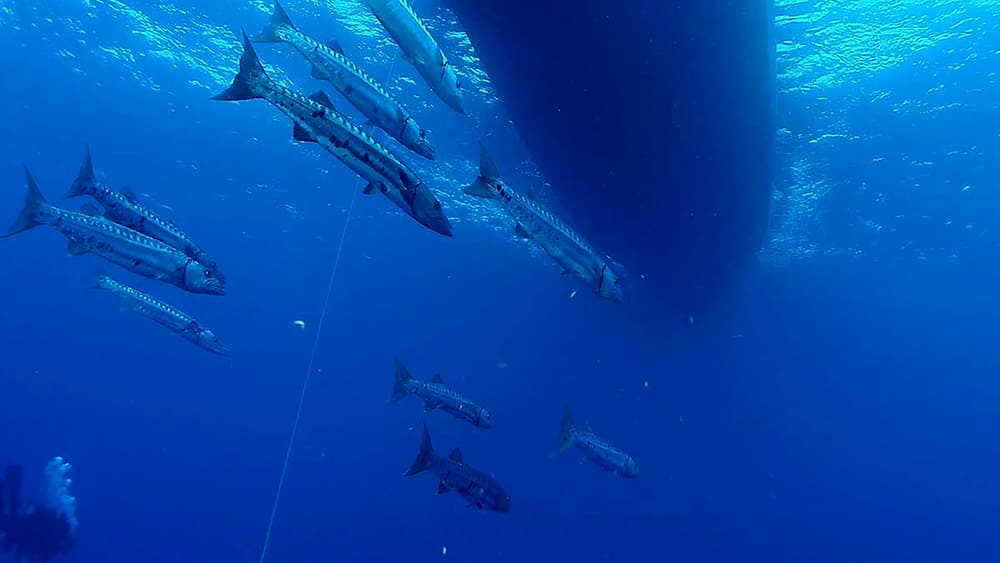
Schools of chub and jack may also pass through the area.
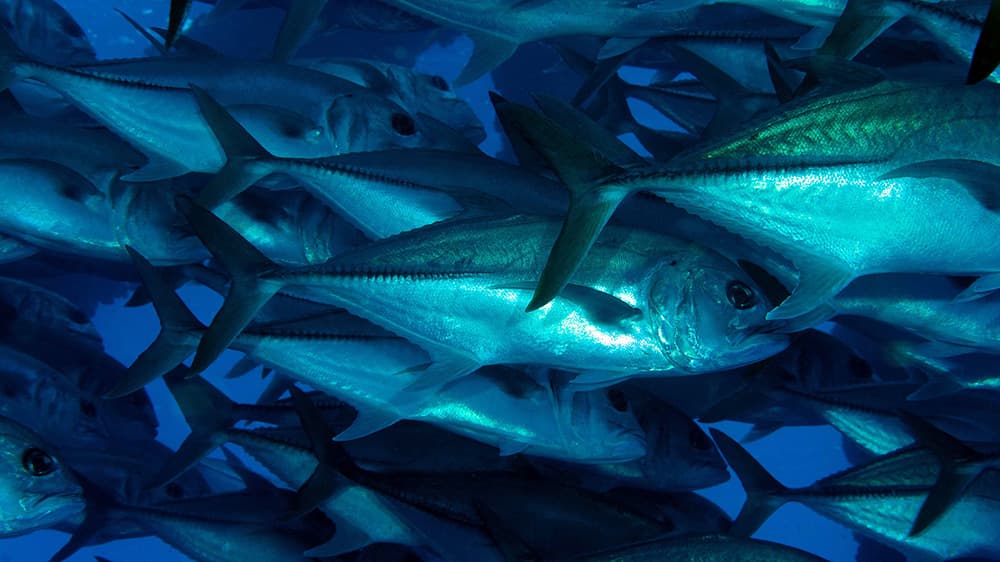
Looking down, you can already make out the reef 60 feet below. Huge coral heads stretch as far as the eye can see. You can't see much detail at this point, so just keep diving.
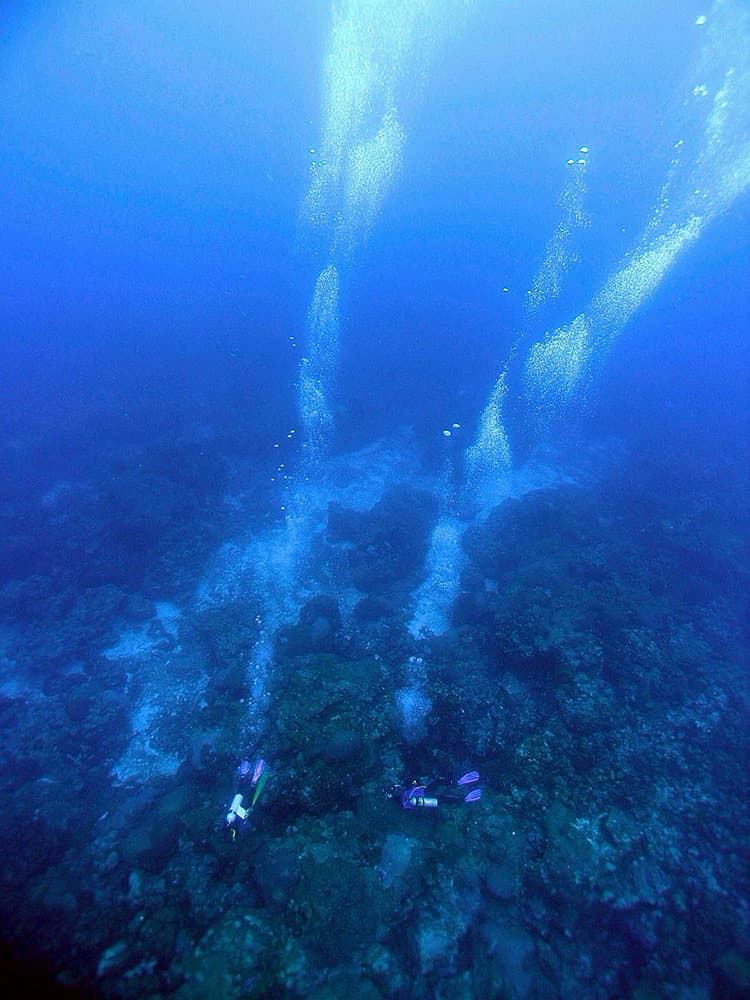
As you approach the top of the reef you start to see all of the fish. Many hover near the corals, waiting to duck for cover should the need arise.
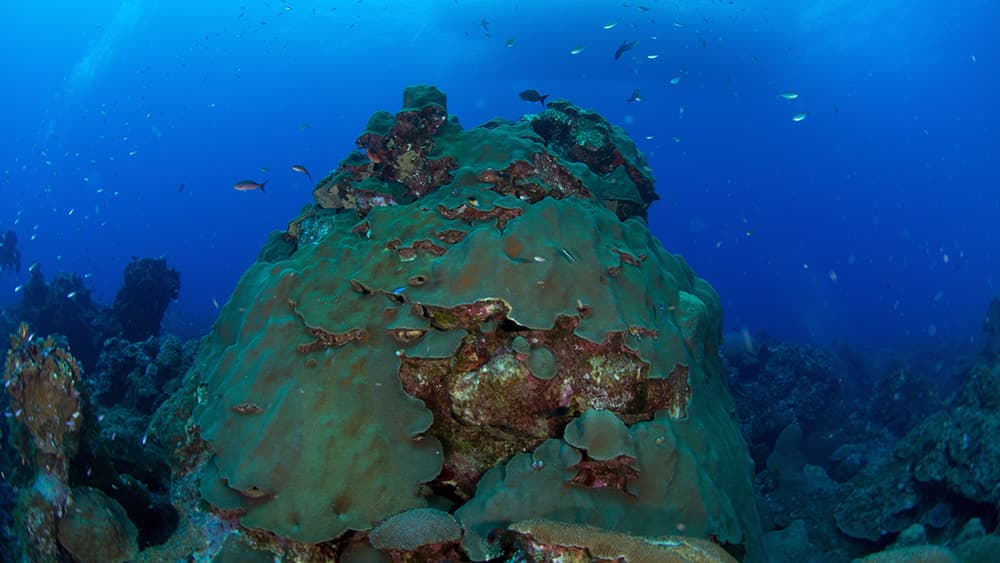
There is so much coral that you can hardly believe your eyes! Boulders of coral pile on top of one another creating an amazing seascape. As much as 52% of the bottom is covered in live coral.
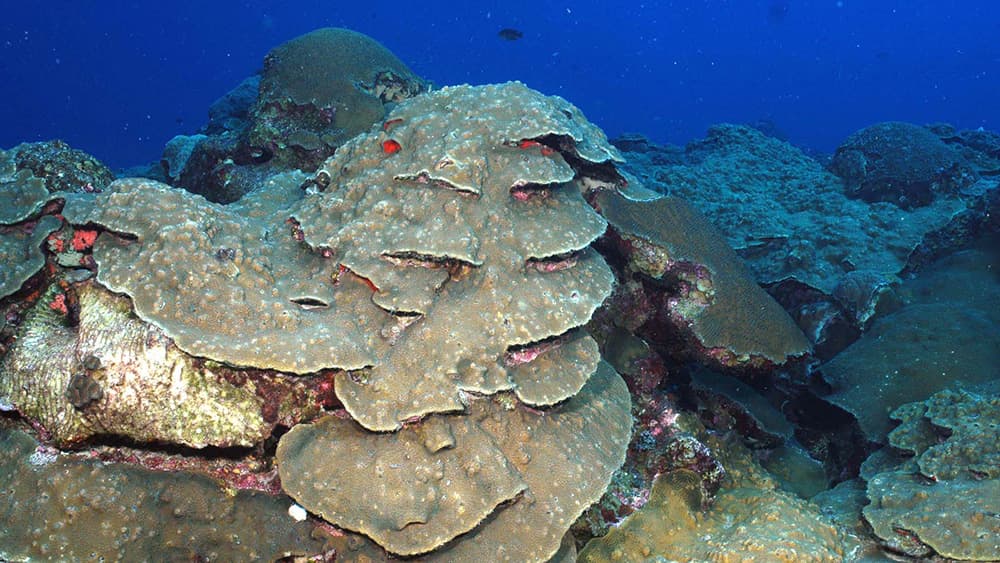
Colorful sponges, large and small, fill many of the spaces between and around corals.
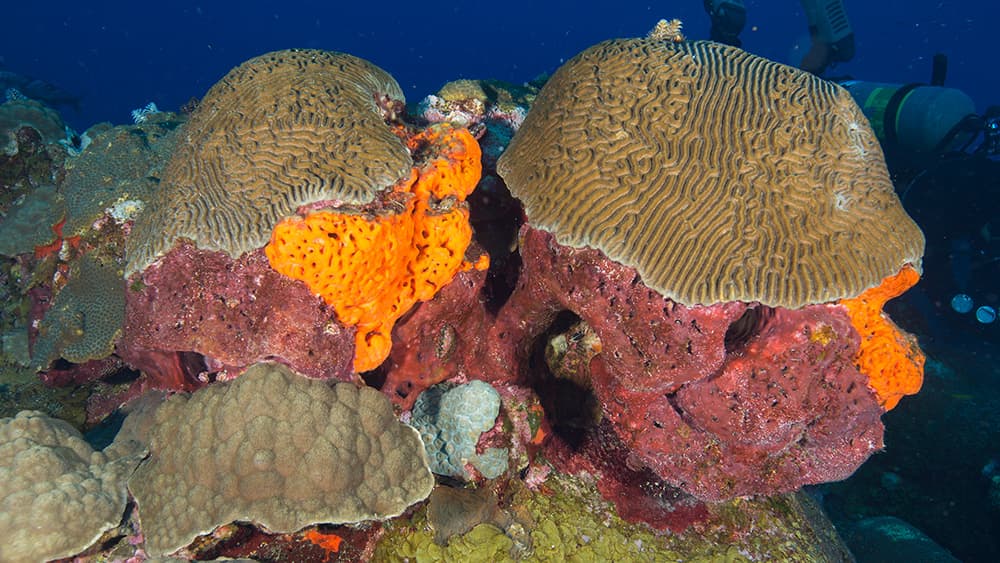
Bluehead wrasses, blue and brown chromis, and a variety of damselfish are the most common fish species you'll see atop the reef.
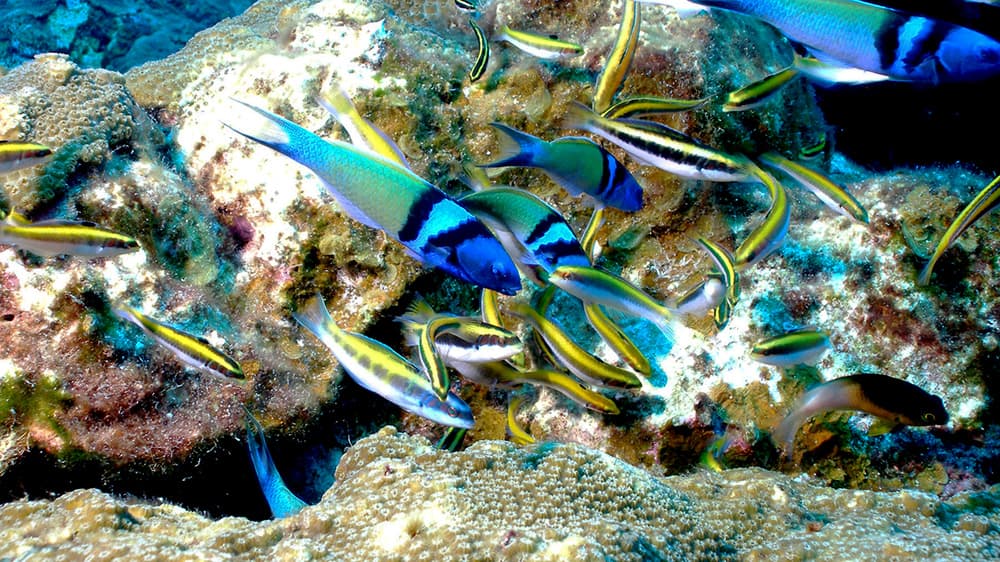
You should also keep an eye out for colorful butterflyfish and parrotfish. You might even hear parrotfish before you see them, due to the crunching noises they make while eating algae off the reef.
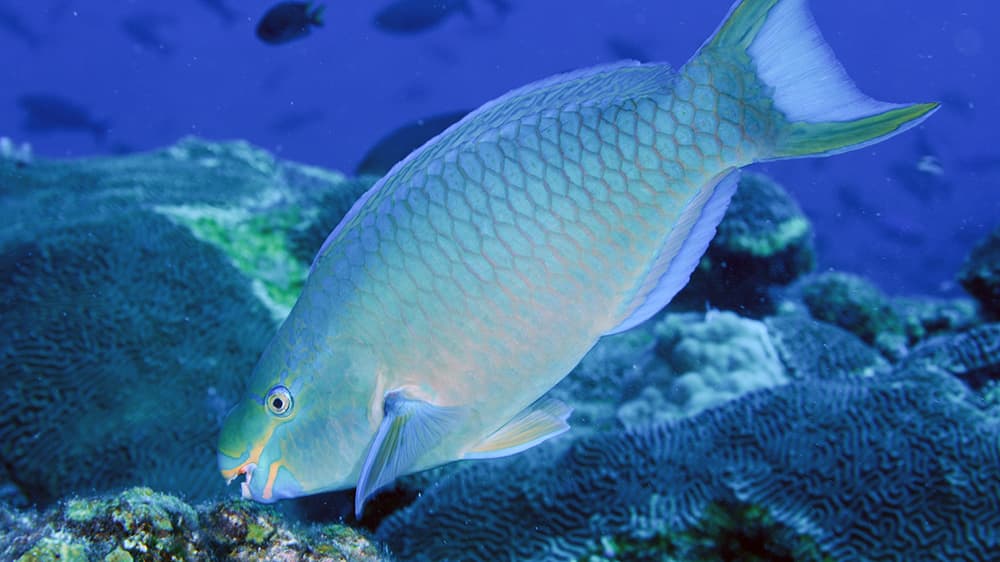
Groupers are also quite noticeable here--a sure sign of a healthy reef!
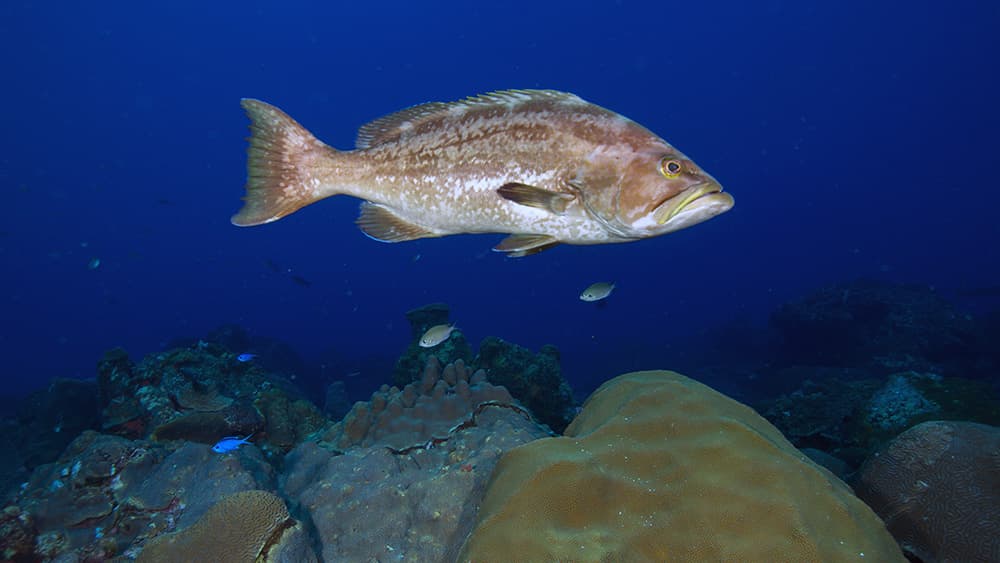
But, not everything swims out in the open. Under ledges you may find squirrelfish, pufferfish, or eels.
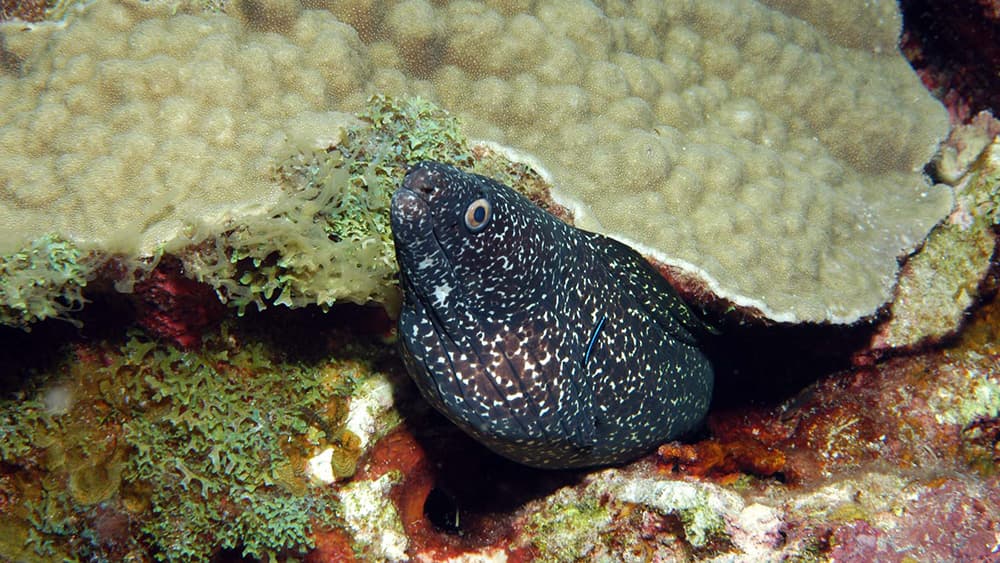
Crabs and shrimp sometimes venture out onto the reef, but most often hide out in the nooks and crannies.
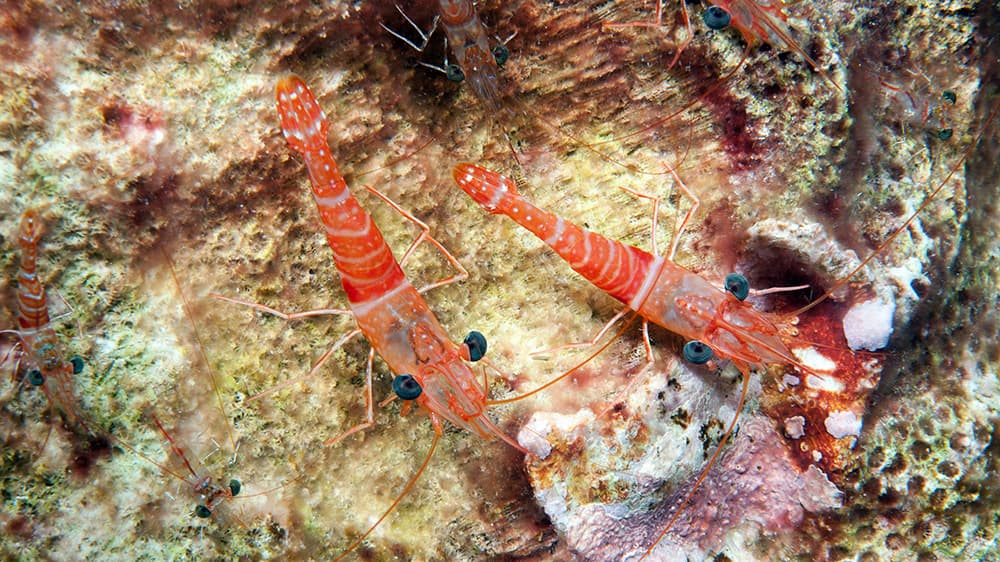
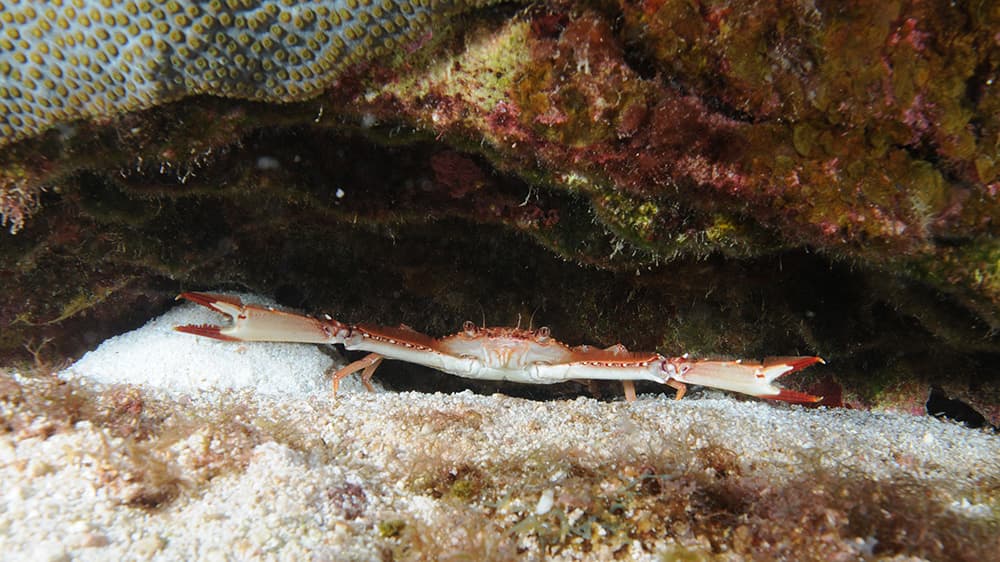
Christmas tree worms live right in the middle of coral heads. Their bodies are encased in tubes (which the corals grow around) with just their colorful, tree-shaped gills extending out into the water. They will retract completely into their tubes if startled.
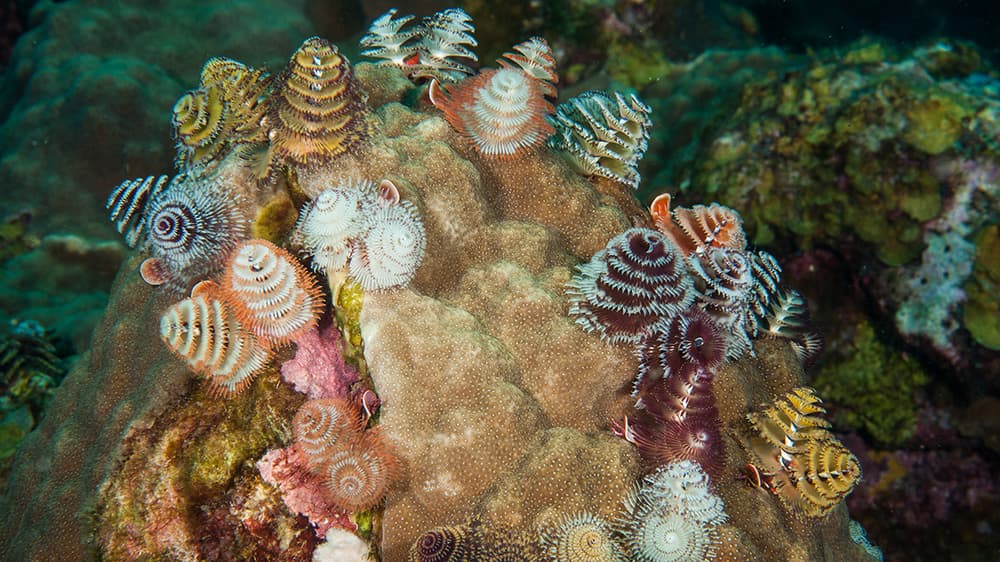
As you cruise over the reef, don't forget to look closely at the corals themselves. From a distance, they may look like stone, but corals are animals made of hundreds of small polyps across their surface.
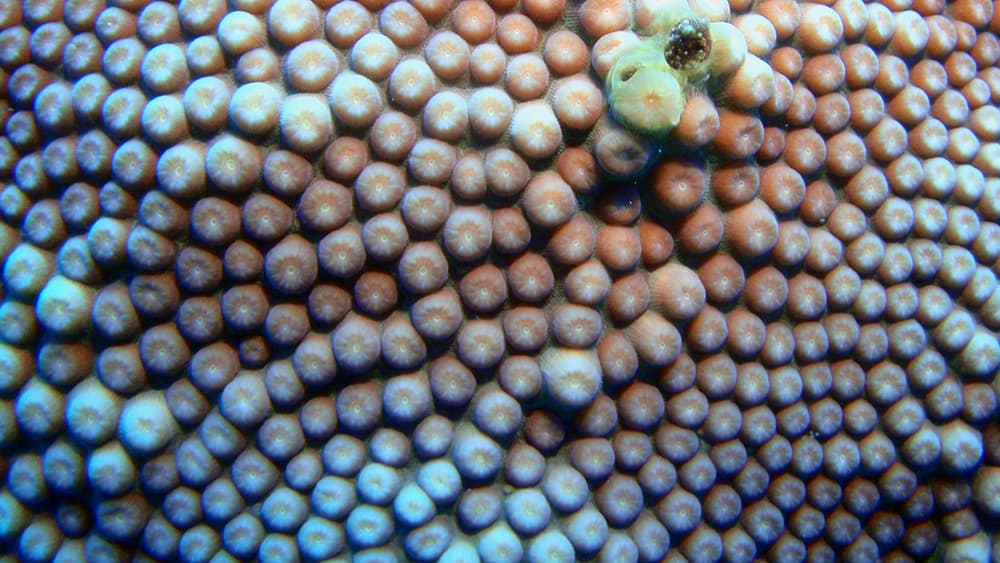

Eventually you will arrive at an open sand flat or even a sand channel.
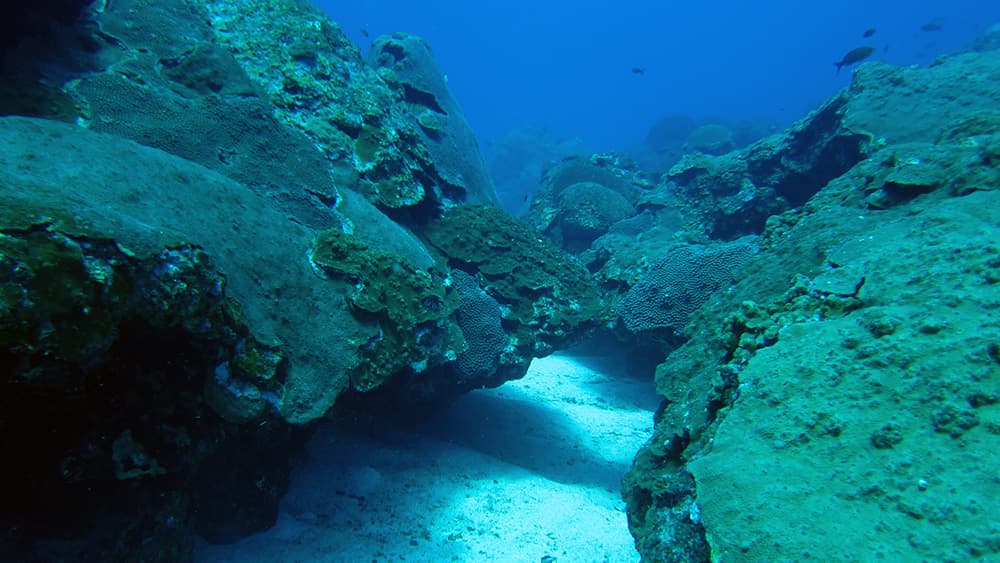
This is where you may find an occasional nurse shark, sea turtle or stingray resting. Queen conchs like these areas too
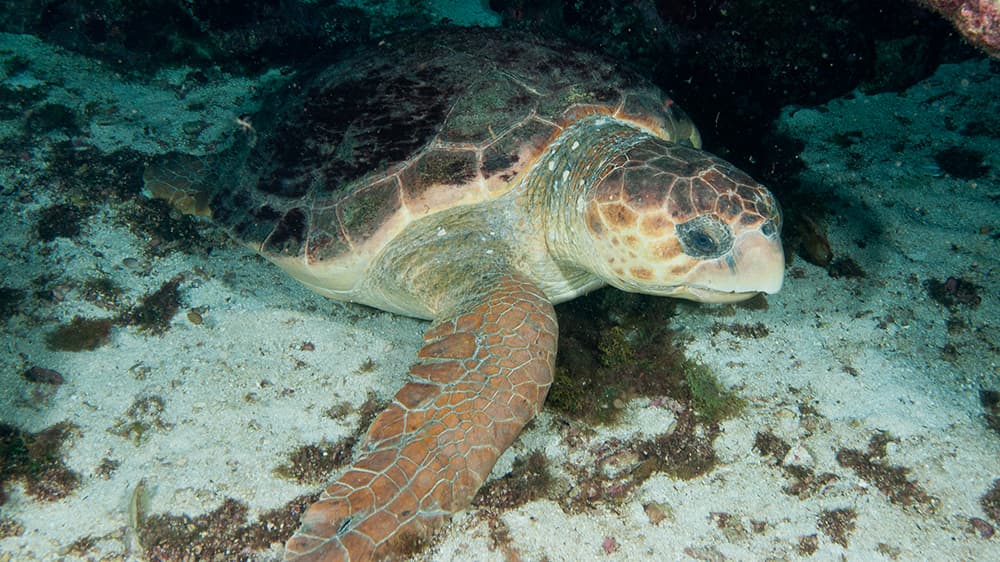
Stay still for a while and you’ll find that the barren-looking sand is actually full of life!

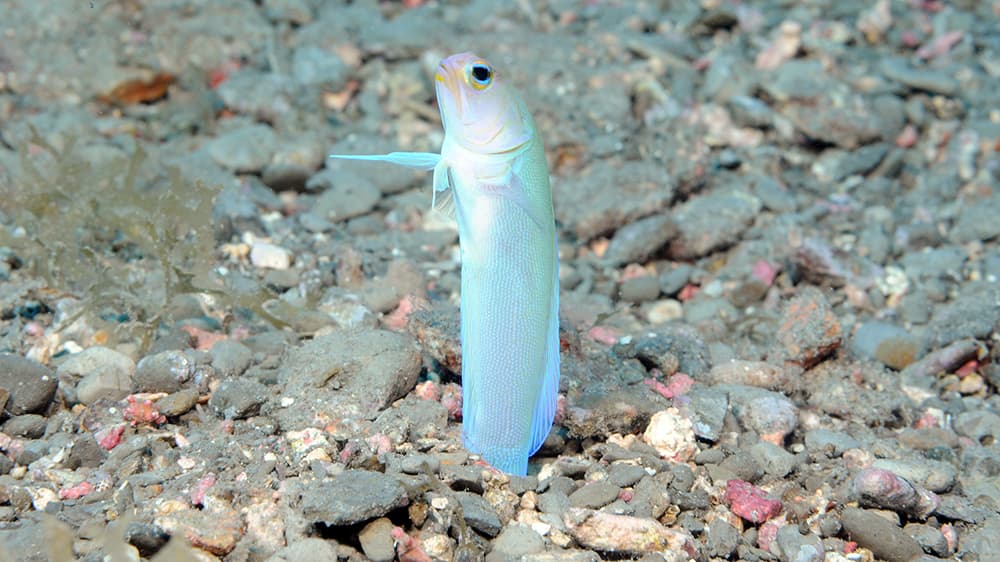
Don’t forget to look up every once in a while or you might miss a passing manta ray, spotted eagle ray, or shark. These large animals swim silently over the reef. If you’re not looking at the right time, you may never know they are there.
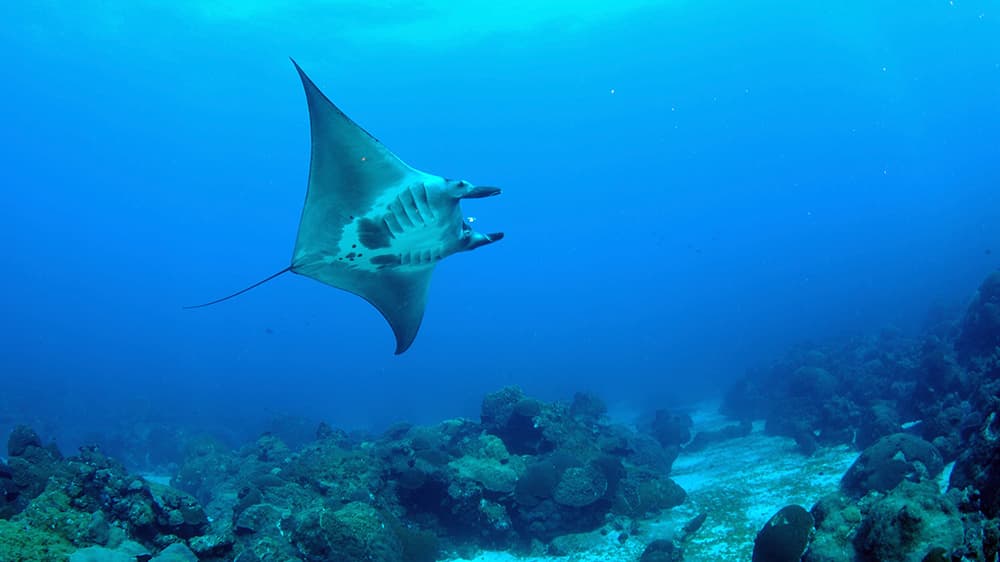
On the way back to the surface, keep your eyes open.
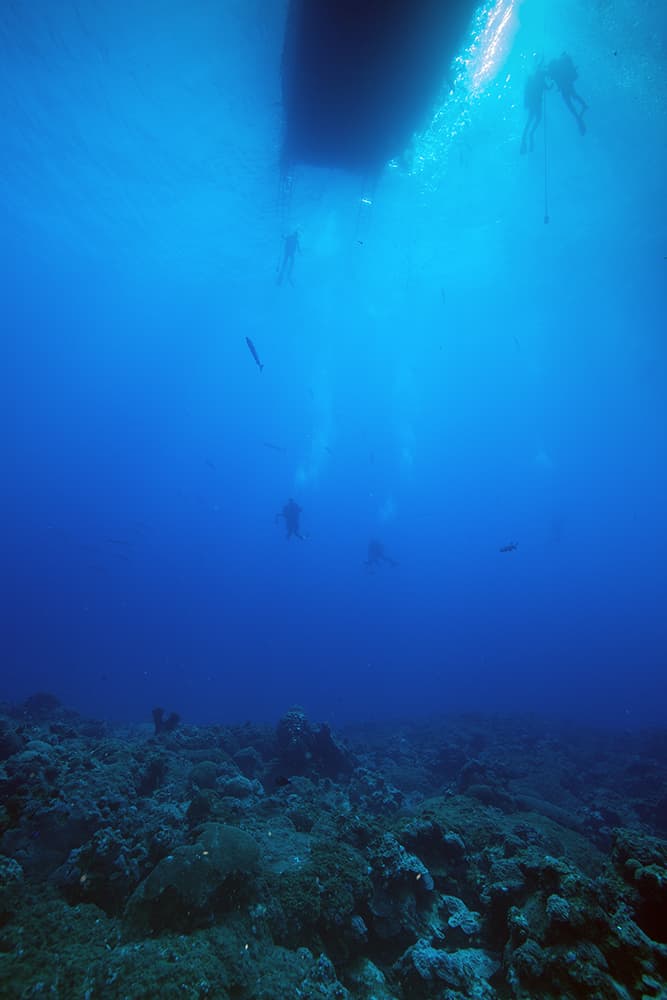
You never know what you’ll see floating by you...

or cruising beneath you!
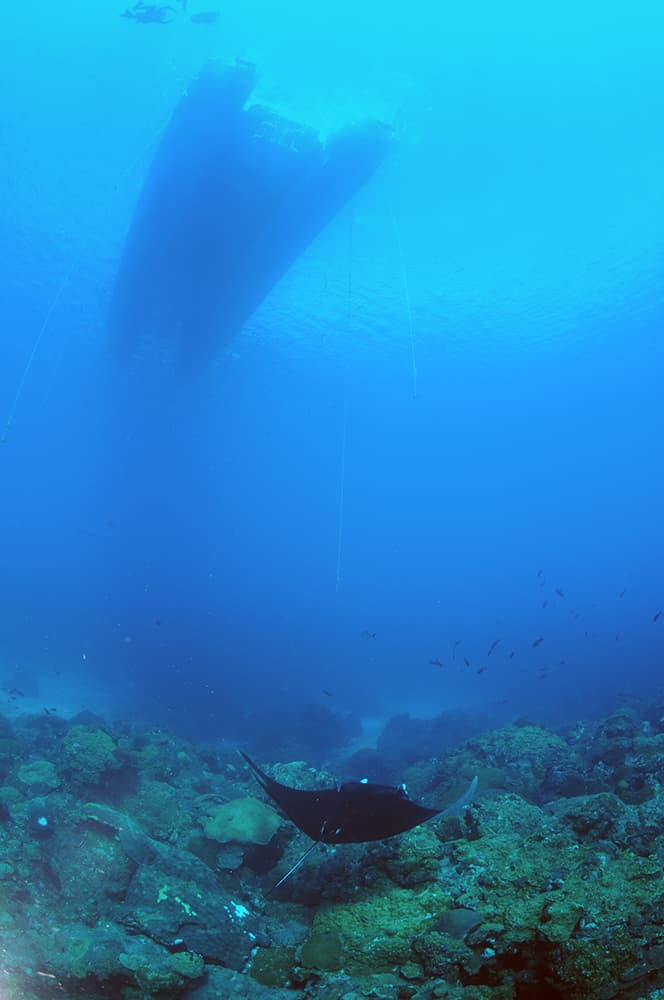
Even at your safety stop beneath the boat, there’s plenty to watch, and those barracuda will still be waiting to keep a watchful eye on you.

There’s never a dull moment at the Flower Garden Banks!

